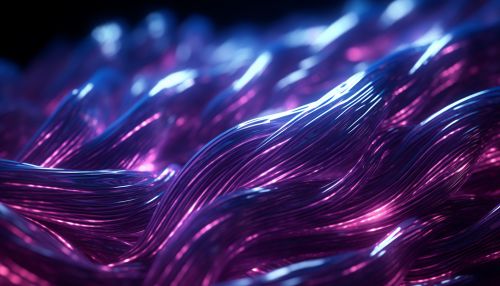Actin Filaments
Structure and Function
Actin filaments, also known as microfilaments, are the thinnest filaments of the cytoskeleton, a structure found in the cytoplasm of eukaryotic cells. They are composed of linear polymers of G-actin (globular actin) proteins, and are usually present in a helical arrangement. Actin filaments are crucial for many cellular processes, including cell motility, cell division, and the maintenance of cell shape and polarity.
Actin is a globular, roughly 42-kDa protein that is highly conserved across eukaryotic species. It is one of the most abundant proteins in eukaryotic cells, accounting for approximately 1-2% of the total protein. Actin exists in two forms within the cell: globular or G-actin, which is the monomeric form, and filamentous or F-actin, which is the polymeric form. The polymerization of G-actin into F-actin is a reversible process that is regulated by a variety of actin-binding proteins.


Polymerization and Depolymerization
The polymerization of actin filaments is a complex process that is regulated by a variety of factors. The process begins with the nucleation phase, in which a small number of G-actin monomers come together to form a nucleus. This nucleus then serves as a template for the addition of more G-actin monomers, leading to the elongation phase. The elongation phase continues until the filament reaches a certain length, at which point it enters the steady state phase. During the steady state phase, the rate of addition of G-actin monomers at the plus end of the filament is balanced by the rate of removal of G-actin monomers at the minus end, leading to a process known as treadmilling.
Depolymerization, or the breakdown of actin filaments, is also a complex process that is regulated by a variety of factors. It can occur through the action of actin-binding proteins that sever the filament, or through the spontaneous dissociation of G-actin monomers from the ends of the filament. The rate of depolymerization is typically slower than the rate of polymerization, leading to a net increase in the amount of F-actin in the cell.
Actin-Binding Proteins
Actin-binding proteins are a diverse group of proteins that interact with actin filaments and regulate their dynamics and organization. They can be broadly classified into three categories: proteins that nucleate the formation of new filaments, proteins that cap the ends of filaments and regulate their length, and proteins that sever existing filaments and create new ends.
Nucleating proteins, such as the Arp2/3 complex, initiate the formation of new actin filaments by promoting the assembly of G-actin monomers into a nucleus. Capping proteins, such as CapZ and gelsolin, bind to the ends of actin filaments and prevent the addition or loss of G-actin monomers, thereby regulating filament length. Severing proteins, such as cofilin and gelsolin, bind to actin filaments and induce breaks, creating new ends for the addition or loss of G-actin monomers.
Role in Cellular Processes
Actin filaments play a crucial role in many cellular processes, including cell motility, cell division, and the maintenance of cell shape and polarity.
In cell motility, actin filaments are involved in the formation of structures such as lamellipodia and filopodia, which are extensions of the cell membrane that drive cell movement. The polymerization of actin filaments at the leading edge of these structures generates a force that pushes the membrane forward, while the depolymerization of actin filaments at the trailing edge allows the cell to retract.
In cell division, actin filaments are involved in the formation of the contractile ring, a structure that forms at the equator of the cell during cytokinesis and drives the separation of the two daughter cells. The contraction of the actin filaments in the ring generates a force that pinches the cell in two.
In the maintenance of cell shape and polarity, actin filaments form a cortical network beneath the cell membrane that provides mechanical support and determines cell shape. They also provide tracks for the directed transport of vesicles and organelles, contributing to the establishment and maintenance of cell polarity.
